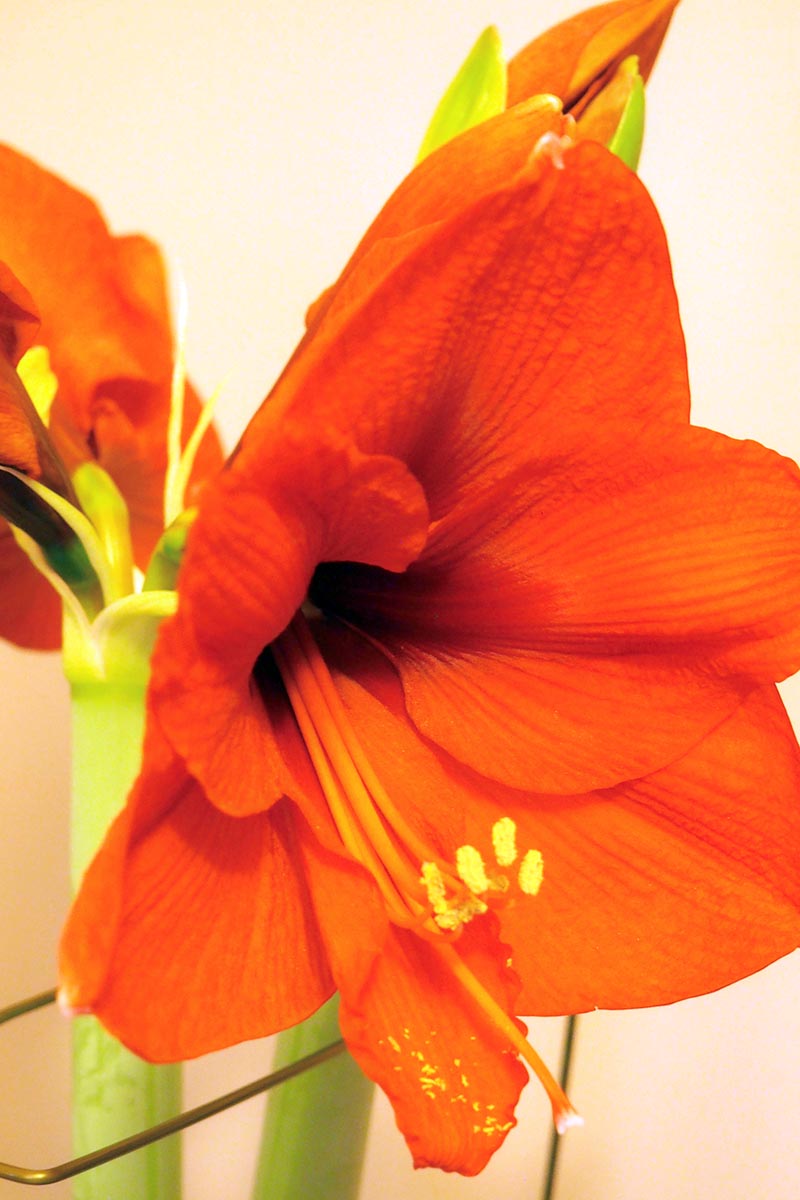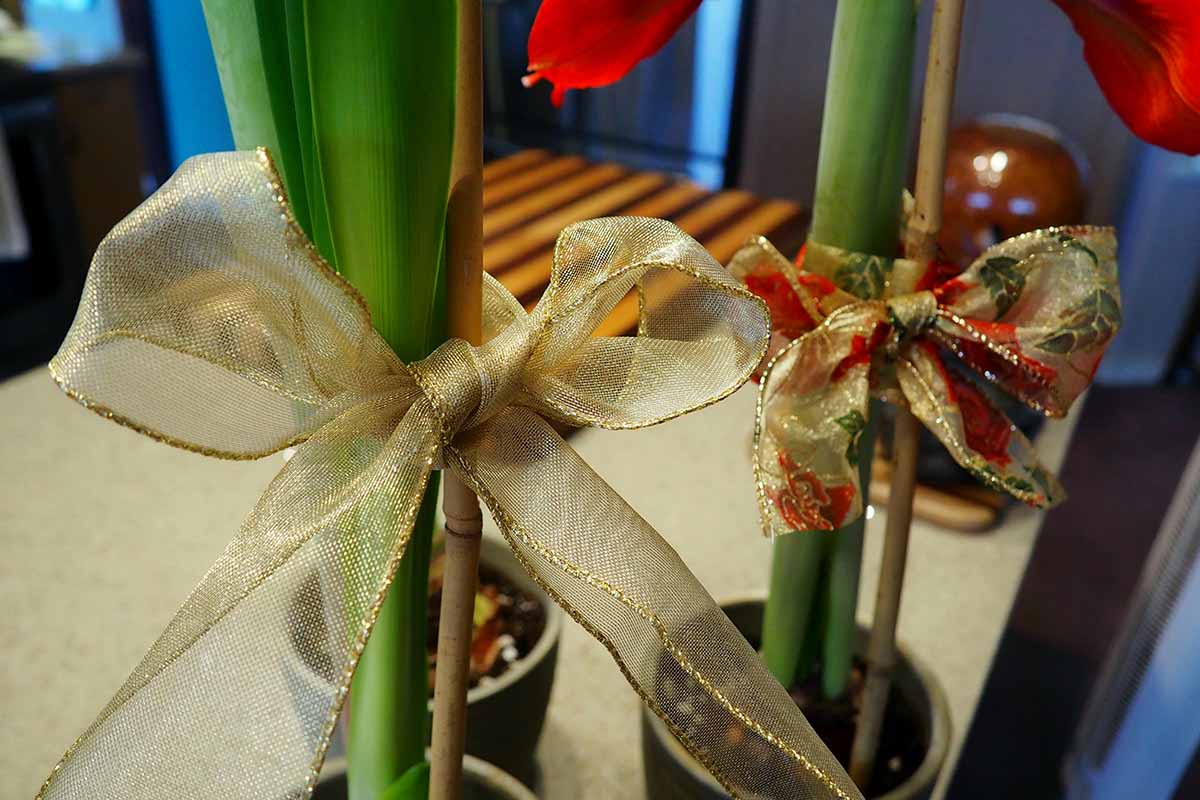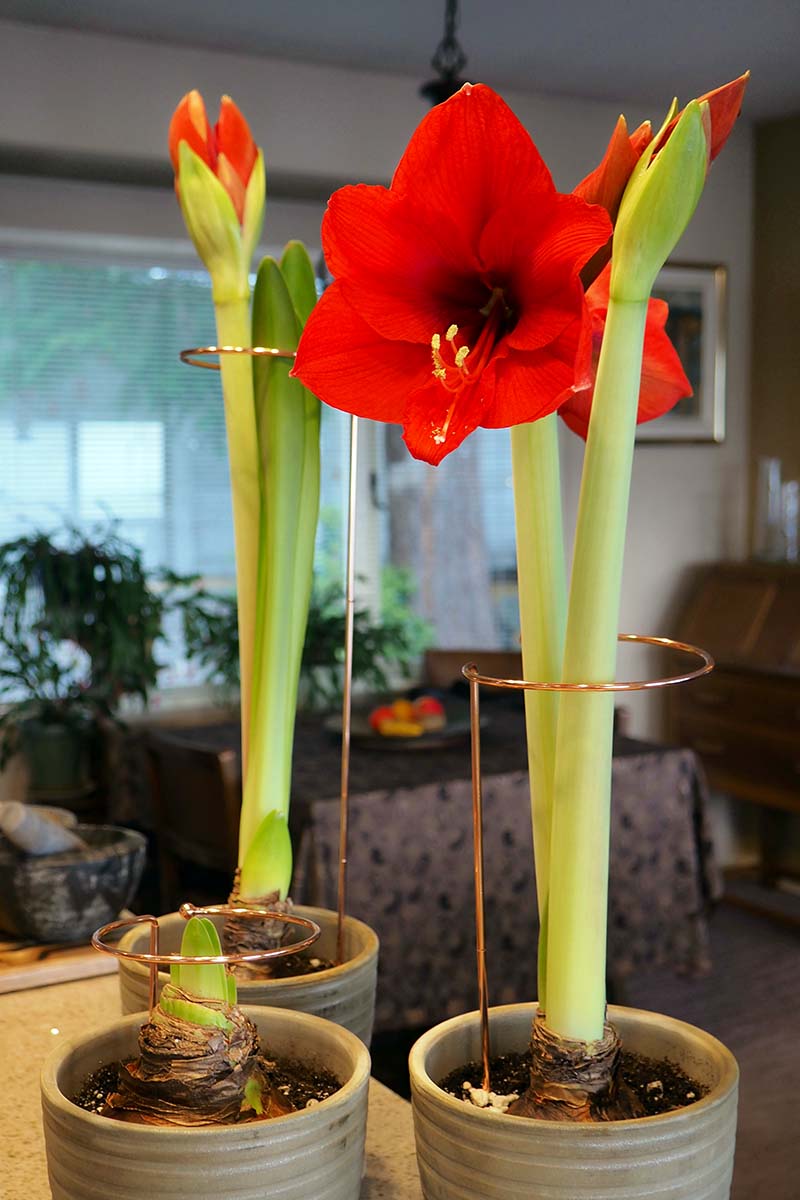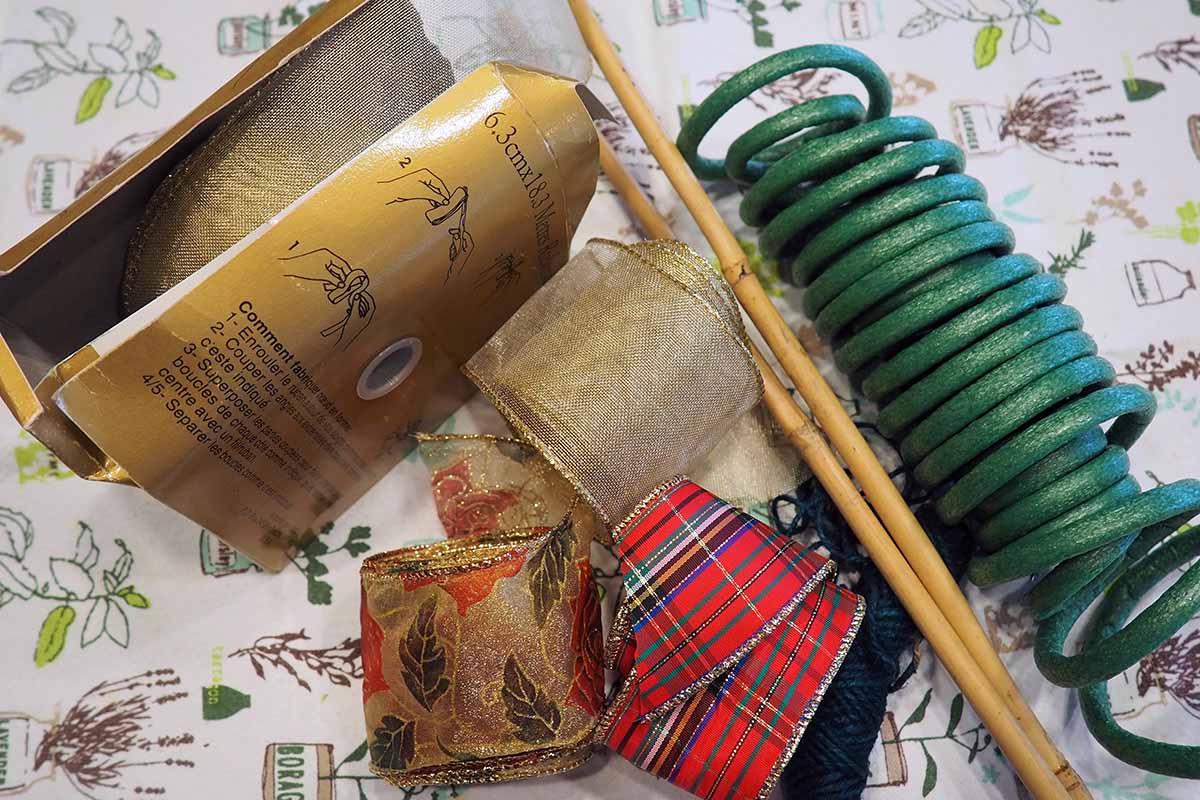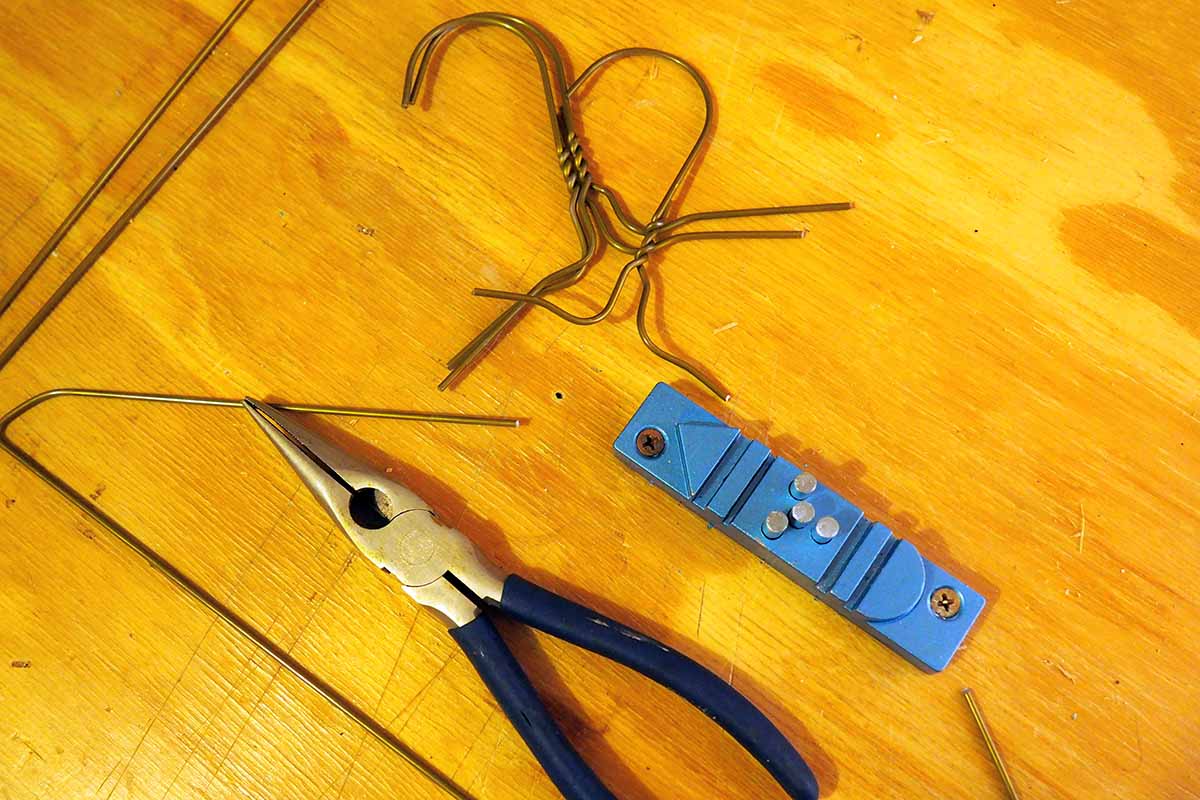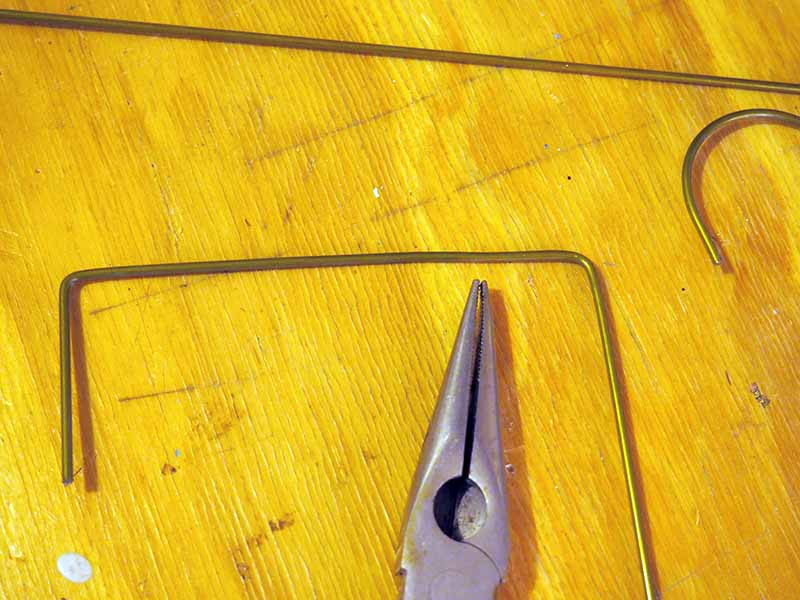But in full bloom, plants can lean or become top-heavy and may require staking to stay upright – particularly those cultivars with full, double blooms! We link to vendors to help you find relevant products. If you buy from one of our links, we may earn a commission. Adding a rod or pole for support gives them strength and stability, but you don’t want to use anything too big or bulky that can detract from the beautiful flowers. Instead, the ideal is a slender but sturdy support that disappears into the background or adds a light, decorative touch. Standalone supports are easily made from a variety of materials, but you’ll also need a plant clip, ribbon, or twine to attach flower stems to their supports – or you can quickly make a wire loop to keep plants from flopping. And if you don’t fancy the idea of rigging your own, there are plenty of attractive options available for purchase. For indoor blooms that stay upright, join us now for a look at how to stake amaryllis. Here’s everything we’ll cover in this guide:
Amaryllis Basics
Amaryllis are large, frost-tender bulbs that produce gorgeous, showy flowers. These are often forced to bloom indoors over the winter holidays. The bulbs send up dark green, strappy foliage and one to three flower stems per bulb, with as many as five flowers per stem. They grow to a height of 12 to 24 inches, and when grown indoors, are often planted in small pots for forcing. In full flower, these ornate perennials can become top heavy and may need some assistance to keep flower stems upright. Many folks who buy bulbs for the holidays or receive them as gifts dispose of them after flowering. But with just a little care and maintenance, they can be kept for many years, giving colorful, repeat flower performances each winter. If that appeals, be sure to read our guide to caring for amaryllis after flowering! Now, let’s get into how to support these colorful beauties.
Stake Materials and Sizes
A variety of materials can be used for freestanding supports, provided they have the strength to keep the flower stems upright. Bamboo, cedar, powder coated or painted wire, and fiberglass, metal, or poly rods are all good options. For plants in small pots, keep the rod size to a diameter of half an inch or less – there’s often very little wiggle room between the bulb and pot walls for wider sizes. Larger ones are fine in bigger pots or planters, and in outdoor beds. To provide adequate stability, flower stems should be attached to freestanding rods or supports a few inches below the blooms. Freestanding supports should be as tall as the flowers, extending up to 24 inches above the soil, depending on the mature height of your cultivar. Individual specimens may vary, but expected dimensions are typically noted on the plant tag that came with the bulbs. You did keep those tags, right? If you have trouble keeping track of a cultivar’s specs, tape the plant tag into your garden journal for fast and easy reference. Get inspired to start this productive habit with a read of 7 great garden journals to plan, record, and celebrate your garden – journals also make great gifts for the gardeners in your life! When calculating the overall length for your supports, add on another four to six inches to insert into the soil, depending on the pot size. Looped supports offer an alternative to freestanding ones. These are typically made of stiff wire or thin metal rods for strength and flex. Often adjustable, loops don’t need to be as tall as the flowers. They may feature two or three connecting rods to vary the height as needed, and are topped with a circular, rectangular, or spiral-shaped loop that encircles stems and foliage a few inches below the flowers. For plants in small containers, set your freestanding or looped rods in place close to the bulb when new growth is a few inches high – this allows the densely twining roots to help anchor them in place. In larger containers and garden beds, supporting the stems can wait until plants have reached their full height, but they should be in place before the flower buds open.
Other Necessary Materials
Loops are self-contained and need nothing else to work. However, for freestanding supports you’ll need something to attach your plants with. Stems can be attached a few inches below the flower buds with florist’s tape, decorative ribbons, twine, or even a foam twist tie. And plant clips are an easy option, provided the space allowed is large enough to encircle stems without causing damage. The best time to attach stems to their supports is when they’re a couple of inches away from full height. Use florist’s tape, foam twist ties, or ribbon to wrap around the stems and supports once or twice, then finish by tying off on the stake, not the stem. The tie should be gently taut, lightly cradling the stem.
Make Your Own Loops
If you’re feeling crafty, you can also make your own loop from a wire clothes hanger. You’ll need a sturdy wire hanger, not a flimsy one, and a pair of wire-cutting pliers to cut and bend the hanger. A wire-bending jig can also be used for making right angles. Here’s how to do it:
- Use wire cutters to remove the hook about 2 inches down from each shoulder.
- With your pliers or wire-bending jig, straighten out the two hanger angles so you have a straight piece of wire.
- Measure about two inches from one end and bend into a right angle with the pliers or jig.
- Make another right angle five inches along.
- One and a half inches along, bend the wire again for a third right angle.
- Another five and a half inches along, bend the wire downwards at a right angle to make a stake.
- Go back to the open end of the loop. Using the pliers, grasp half an inch from the tip and bend under – this makes a hook to close the loop over the opposing arm. When it’s finished, you’ll have a rectangular loop of approximately five-by-one-and-a-half inches atop an 18-inch rod. Insert the base end into the soil after new growth emerges. As your amaryllis grows, simply open the loop to enclose the stem and foliage, then close it to keep things in place. Here are a few popular choices to consider:
Adjustable Support Kit
Perfect for long-stemmed plants, this handsome, copper-finished kit features three sturdy extension rods and two support rings for excellent versatility – and includes a felt storage pouch. Adjustable Support Kit The two support rings measure two-and-a-half inches and four inches, and the three extensions adjust to heights of six to 16 inches, supporting plants up to 12 inches above the soil line. This support kit is available at Burpee.
Amaryllis Stakes
These brass stakes are sleek and highly adjustable with four sections, plus a spiraling loop that supports heavy flowers beautifully. Adjustable Stakes Using all four rods, the assembled height is 22 and three-quarter inches – use fewer rods for shorter cultivars. Available in sets of three at Gardener’s Supply Company.
Minifa Natural Bamboo
Natural bamboo is strong, sturdy, long-lasting, and eco-friendly. It’s lightweight with an attractive finish. Bamboo Rods Hydrofarm offers bamboo rods measuring 24 inches in length with a diameter that varies from one-quarter to three-eighths of an inch.
Peacock Mini Plant Supports
With an adjustable eight-inch ring, the Peacock mini plant support is made of sturdy galvanized steel with a protective and rust-resistant green vinyl coating that lasts for years. Peacock Mini Plant Supports The easy-slide ring can be adjusted anywhere on the rod, and these measure 24 or 36 inches. A black filial finishes off the top and keeps eyes safe from getting poked! Sets of two are available in two sizes, either 24 or 36 inches, at Gardener’s Supply Company.
Vigoro Steel Core Garden Stake
These Vigoro steel core garden stakes are sturdy, but discreet. The strong and durable steel is coated with a textured green plastic finish that helps to secure clips or ties in place without sliding, and blends in with the foliage. Vigoro Steel Core The rods are rust and UV resistant, and measure 36 inches high with a diameter of five-sixteenths of an inch. These are ideal for use indoors or outside. Individual stakes are available at Home Depot.
Keep Stems Tall and Straight
Delightfully showy with large, ornate flowers, amaryllis plants sometimes need a hand to keep their heady blooms upright – particularly in those small indoor pots! Place loops and stake supports a few inches below the flowers, and put them in place early so the twining roots can wrap around them for added stability. And don’t forget to rotate your pots a quarter turn every few days to help promote tall, straight growth. Have you had to stake stems before? What worked for you? Share your tips and any questions you may have in the comments below! For more Hippeastrum growing tips, add these guides to your reading list next:
How to Propagate Amaryllis Bulbs17 Awesome Amaryllis Varieties to Grow Indoors or OutTips for Growing Amaryllis in the Garden

